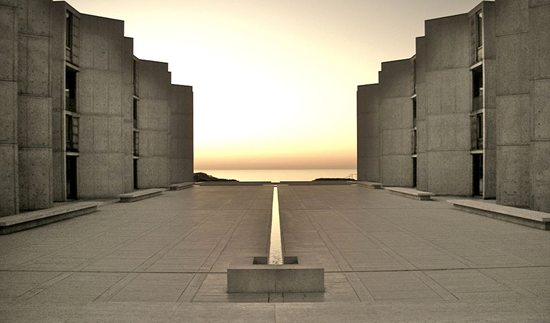
10 Obscure, Awe-Inspiring Structures Made From Concrete
By Morris M, Urban Ghosts Media, 5 November 2015.
By Morris M, Urban Ghosts Media, 5 November 2015.
Where architecture is concerned, concrete is often seen as a byword for “ugly.” Brutalism is popularly thought to have no redeeming features whatsoever, and the idea of living within such concrete forms is anathema to most of the population.
Yet there’s another side to these structures. For every irredeemable paean to ugliness, there’s usually at least one that’s awe-inspiring, sublime, or simply too imposing to ignore. Here are ten iconic structures that bring poetry to concrete.
1. TWA Flight Centre, New York City
Image: Acroterion
The period immediately after World War Two saw the United States brimming with optimism. The Jet Age was here, prosperity was booming, Watergate hadn’t happened yet and the future was bright. No building captures that intense feel-good factor as completely as the TWA Flight Centre at JFK. The last project of Finnish architect Eero Saarinen, it was looping, whirling hymn to the future.
Made largely from concrete, the Flight Centre took the excitement of the Jet Age and infused it into every inch of its interior. Surfaces swirl and curve in an aerodynamic vortex. Walls shaped like wings give the impression of flying, even while static. Futuristic concrete tubes connect far-flung regions, while departure boards blink from inside sci-fi style concrete frames. The whole thing looks less like a modern airport than a 22nd century spaceport.
Although some sections are now part of Jet Blue’s modern Terminal 5, the vast majority of the building has been closed off to the public since 2001. As of 2015, it’s on the verge of being redeveloped into a hotel.
2. Cactus Dome, Marshall Islands
Image: US Department of Defense
On a small island in the pacific rises a peculiar structure. Sitting unguarded in the middle of remote Runit Island in the Marshall Islands is a vast dome of almost delirious size. Covering 100,000 square-feet and consisting of 358 gigantic concrete panels, it was built in the late 1970s by the US government at a cost of a quarter of a billion dollars. Its purpose? To seal away forever a vast nuclear crater.
From 1946 to 1962, the United States exploded many atomic bombs over these islands - most famously at Bikini Atoll. By the end, around 111,000 cubic yards of soil were dangerously contaminated with radiation. Over a decade after the tests stopped, the US decided to clean up all this toxic muck by scooping it up and dumping it in an old crater made by the 18-kiloton ‘Cactus’ test. The result was the Cactus Dome.
Seen today, the dome rises from the ocean almost like a mirage. Thanks to its remote location, there’s no-one there to guard it. Adventurous tourists have even been known to hire a boat and walk right up to it.
3. Habitat 67, Montreal
Image: Sylvain Pastor
Seen from the harbour, Habitat 67 in Montreal is a bizarre architectural oddity. A collection of blocks some giant has stacked haphazardly along the shore that could go toppling over at any minute. But this housing project was far from a slapdash effort hastily thrown together. In 1967, it was considered the future of city living.
The brainchild of architect Moshe Safdie, Habitat 67 brought together 354 separate concrete boxes and stacked them in what was meant to be a utopian layout. Each of the 158 homes had its own roof garden and access via an outside path. Each had multiple outside walls, allowing for plenty of light. And each was made of thick enough concrete that you could hold a rave in your bedroom and your neighbours would never hear.
The result was a semi-crazed cacophony of geometric shapes and harsh angles; a bonkers design for the future. Alternately loved and hated, Habitat 67 has nonetheless retained many of its original residents, including Safdie himself - perhaps one of the few post-war architects with the conviction to actually live in one of his concrete forms.
4. Vele di Scampia, Naples
Image: via Bing Maps
The dark Yin to Habitat 67’s sunny Yang, Vele di Scampia in Naples is what happens when brutalist architecture fails completely. Designed in 1972 to provide affordable housing, it spiralled into a mafia-run den of drug-addiction, squalor and vice where the police were afraid to set foot. In the mid-2000s, gritty Italian crime drama Gomorrah was shot there, depicting life in Italy’s worst slum.
So why are we including it on this list? There’s no denying Vele di Scampia was a miserable failure, even when taking into account the extenuating circumstances of its construction (the city forced many changes at the last minute to save money, resulting in the cramped, dank interiors seen today). Yet, ugly as it is, the structure is also breath-taking. Brutal and imposing, the concrete forms resemble nothing so much as an impressive set torn straight from a grimy Sci-Fi film.
From the outside, the building is all sharp angles, harsh shadows and overcrowding. From its interior walkways, it’s a housing dystopia. Fluorescent lights cast sickly blue shadows on narrow streets. Awkward concrete walkways jut rudely overhead, giving the entrances a haunting, claustrophobic feel. It’s the dark side of poetry wrought in concrete, a grimy masterpiece by someone like Rimbaud.
5. Basilica of St Pius X, France
Image: Luc Viator
It’s an Avant Garde concert hall. A giant, underground car park. It’s a place for storing frozen food, an airline hanger, a Bond villain’s layer…and it’s one of the holiest places in France.
Buried deep beneath the city of Lourdes, the Basilica of St Pius X (sometimes known simply as the ‘underground basilica) is one of the most-architecturally controversial churches in Christendom. Built in 1957 and consecrated in 1958, it’s either a clever, practical design or a sacrilege to Catholic worship. The only thing not in doubt is how grand it is. Capable of seating around 24,000 pilgrims during feast days and as long as two football fields, the interior of this vast concrete cavern is simply awesome to behold.
With its long interior framed by jutting concrete pillars, there’s no doubt that this looks little like a church. But it’s impossible not to get caught up in the grandeur of it all. Hidden beneath the Earth, with no natural light reaching it, the underground basilica is as haunting as it is imposing.
6. Salk Institute, San Diego
Image: Christian Ronnel
Imagine a world wrought entirely out of concrete. A world where the skies are always blue, and a harsh sun always throws hard, angular shadows onto the bleached grey world around you. This place really exists; welcome to the Salk Institute.
A vast, concrete campus located in California, the Salk Institute by Louis Kahn is one of the most utterly imposing structures you’ll ever see. Spread out over two symmetrical buildings lining a central courtyard, it’s a world of harsh corners, concrete tunnels, blazing sunshine and no natural life. Yet the last thing the Institute is, however, is oppressive. With the dormitories’ vast windows and view out over the Pacific Ocean, it feels oddly pleasing. An assurance that, done well, brutalism can enliven even the most-beautiful of environments.
A huge part of its appeal may be that the Southern California sun is usually shining, creating sharp contrasts between the angular stairwells and jutting buildings. Yet even on an overcast day, the Salk Institute is a thing of wonder. One of the few concrete forms to fulfil Brutalism’s often-forgotten dream of a humanistic architecture for all.
7. National Library of Kosovo, Pristina
Image: Diego Delso
It’s an eyesore. A giant collection of concrete boxes enmeshed in chicken wire and - inexplicably - topped with a pile of white domes. Respected newspapers have named it one of the Earth’s ugliest buildings; a triumph of Yugoslav Soviet madness over common sense.
Yet there’s something compelling about the stark, uncompromising form of the National Library of Kosovo. For all its faults, it’s a structure so monumental, so impressively unbothered about what people think of it, that it might just be a work of genius.
On a purely aesthetic level, it’s like nothing else ever built (with good reason, some would add). This uniqueness works in its favour. So alien is the design, so unlikely is the execution that when you look at it, you get the feeling that you’re looking at the set from some half-forgotten Soviet sci-fi film. An impenetrable alien prison, perhaps, or the fortress of some mad galactic dictator. Then there’s the sheer scope of the thing. Even in a concrete-clad city like Pristina, it still manages to dominate your eye line in a way few other buildings could.
It may not be to everyone’s taste, but the National Library of Kosovo harks back to a time when Balkan architects thought big, and consequences be damned.
8. Research Institute of Robotics, St Petersburg
Image: Richard Anderson via Architectuul
Not so long ago, Russia was at the very cutting edge of scientific research. Space exploration, robotics and warfare were all reaching their pinnacle behind the iron curtain. Built just before the US pipped them to the Moon, the Research Institute of Robotics in St Petersburg was the culmination of all this optimism.
Built in 1968, the building is low-lying, practical and sleek, with one great exception. At the front of the institute sits a remarkable concrete structure known as the ‘white tulip.’ A tower made up of several razor-sharp ‘wings’ pointing upwards, it seems on the verge of blasting off into space at any moment - a manifestation of all that space age optimism.
While the architecture of the institute is largely ignored in the West, except in articles about weird buildings of the Soviet era, in Russia itself the design is widely-praised. Aside from being an icon of Soviet design, it harks back to another time. An era when Russia was winning the space race, and the future of the USSR seemed assured.
9. Bulgarian State Monument, Shumen
Image: via Wikipedia
We’ve mentioned the Bulgarian State Monument once or twice before. Nevertheless, there’s no way we could have left it off a list of magnificent concrete structures. Over 1,000ft high and visible from 18 miles away, it’s one of the most impossibly-grand, imposing things ever built.
Commissioned in 1981 to commemorate the 1,300th anniversary of the Bulgarian Empire, everything about the piece was huge. Built in the Cubist style by Krum Damyanov and Ivan Slavov, it featured giant armies of ancient warriors rising many storeys into the sky, looking down on us mere mortals as if from another world. The monument in which they stood was no-less impressive. With its hidden corners and angled, sloping walls, the structure is like something from Ancient Egypt wrought in concrete. The whole thing is so widely acclaimed that it’s one of Bulgaria’s only Communist monuments not to fall to ruin.
Today, you can easily visit, but you’re unlikely to have the whole place to yourself. This commanding concrete form is now a favourite destination for locals having their wedding photos taken.
10. The Barbican, London
Image: Riodamascus
We’re cheating a little bit on this one, as the Barbican Estate is in no way ‘obscure.’ But what it is, however, is one of the few concrete structures nearly everyone who knows of it considers a success.
One of the largest Brutalist estates ever built, the Barbican comprises a series of seemingly never-ending concrete walkways, threading their way through the heart of London. Towers loom high in the air, housing units squat below them, and elevated tunnels lead pedestrians past water pools, outdoor parks and over local gardens. Designed to be a car-free utopia in the middle of a bustling city, the Barbican today is an oasis of calm neatly hidden from the constant roar of the capital’s traffic.
Aesthetically, its vast concrete forms arguably create one of the most intriguing places in the capital. At night, the sodium-lit walkways and galleries make you feel like you’re walking through a set from A Clockwork Orange. Elevated gardens give the impression that nature is welcome here, so long as it fits into the area’s strict symmetrical surroundings. Perhaps it’s no surprise Queen Elizabeth II once called it one of the wonders of the world. Final proof, perhaps, that concrete doesn’t always equal ugly.
Top image: Salk Institute. Credit: TheNose/Wikimedia Commons.
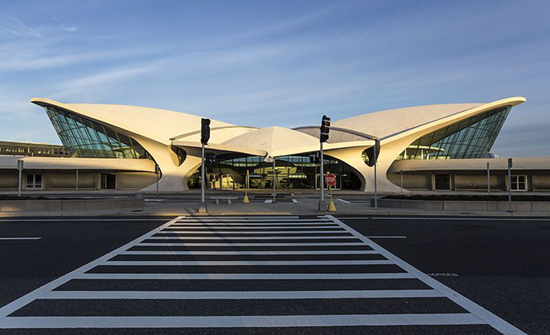
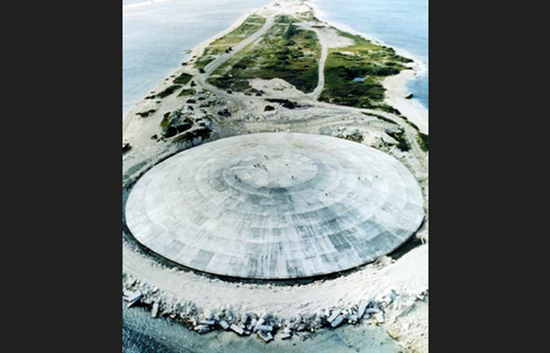
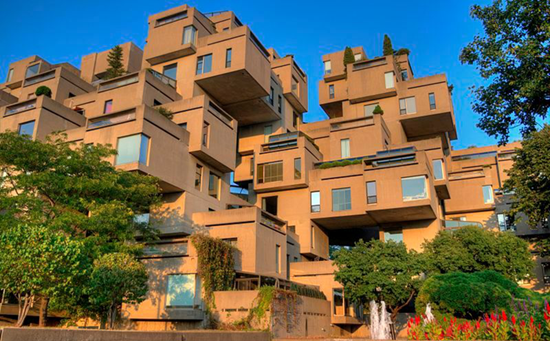





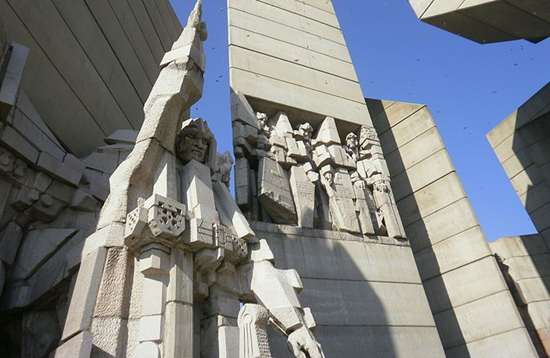

No comments:
Post a Comment
Please adhere to proper blog etiquette when posting your comments. This blog owner will exercise his absolution discretion in allowing or rejecting any comments that are deemed seditious, defamatory, libelous, racist, vulgar, insulting, and other remarks that exhibit similar characteristics. If you insist on using anonymous comments, please write your name or other IDs at the end of your message.